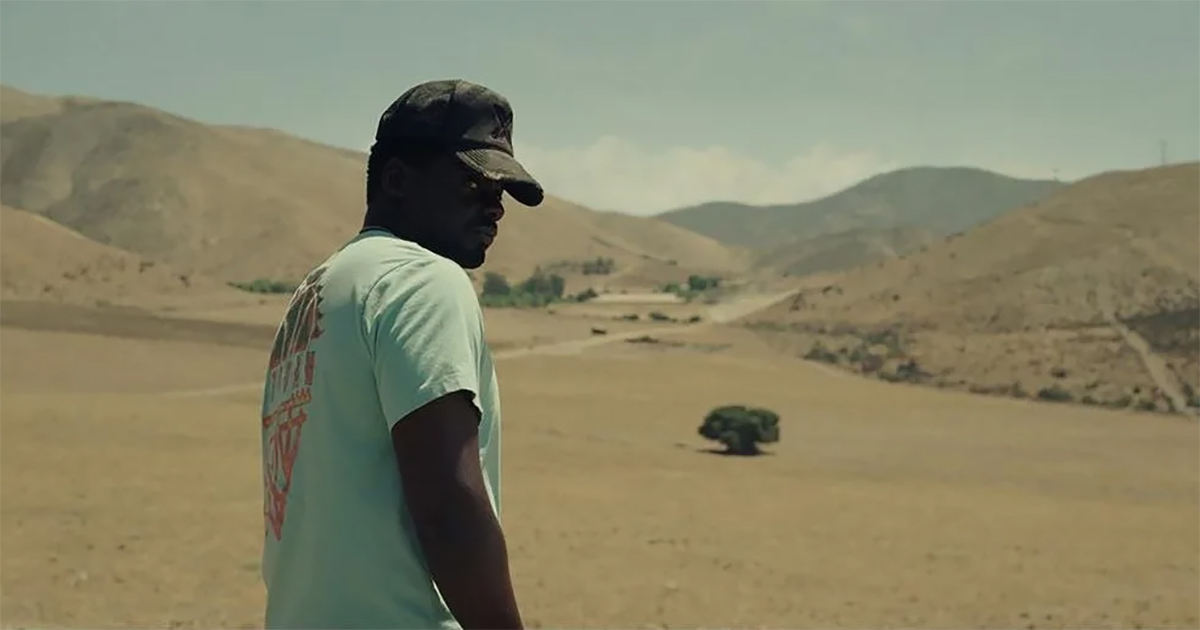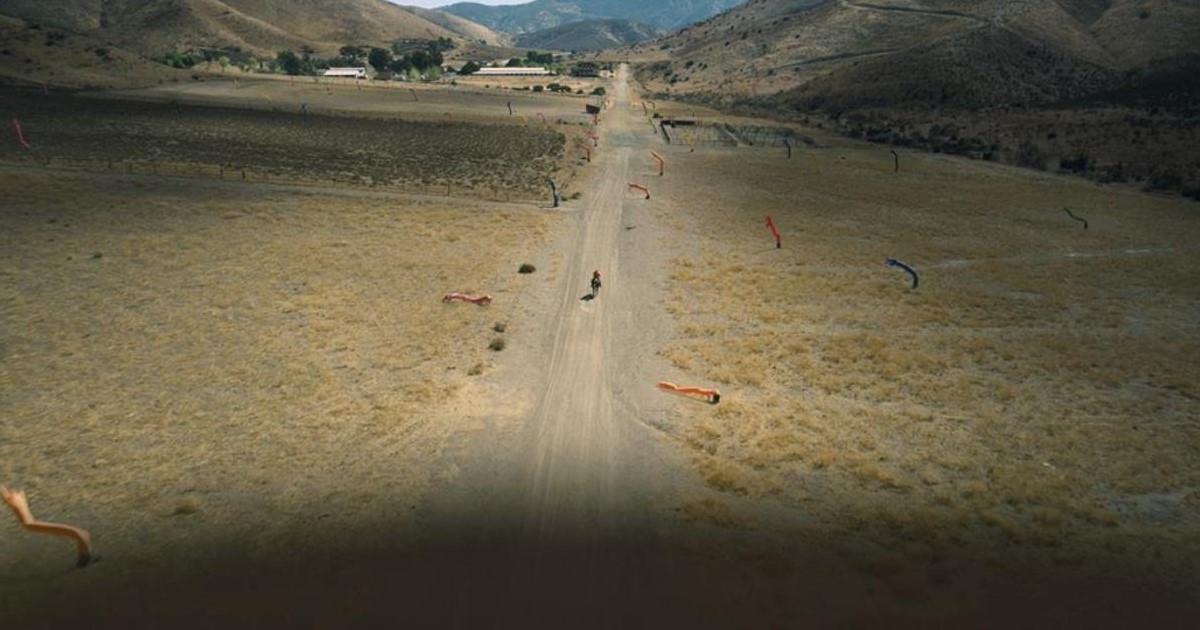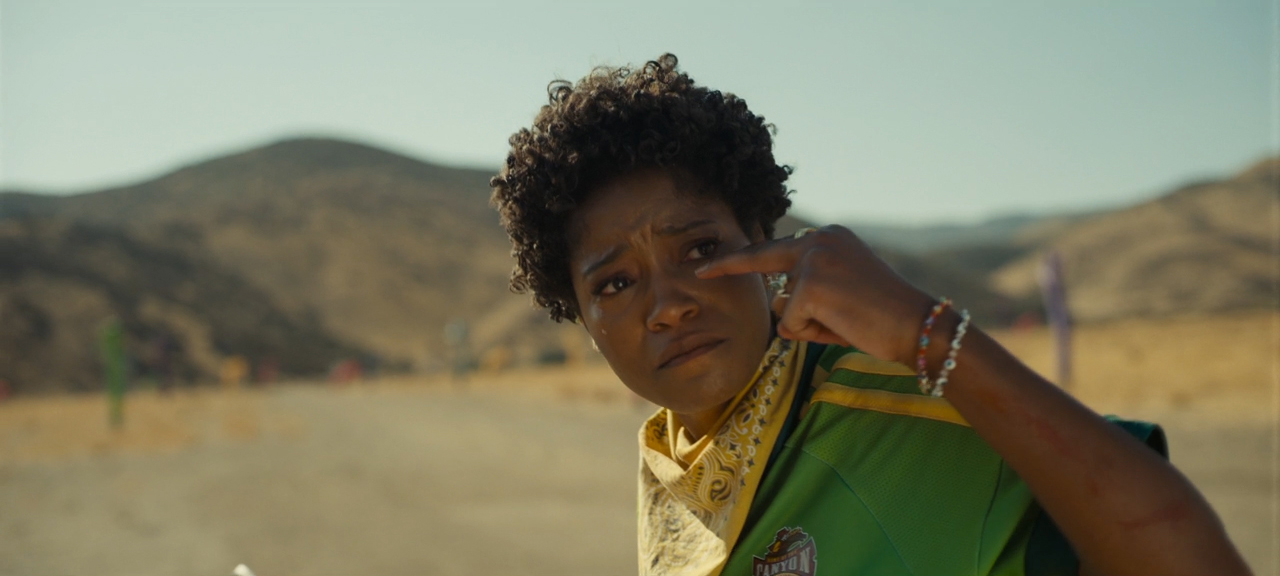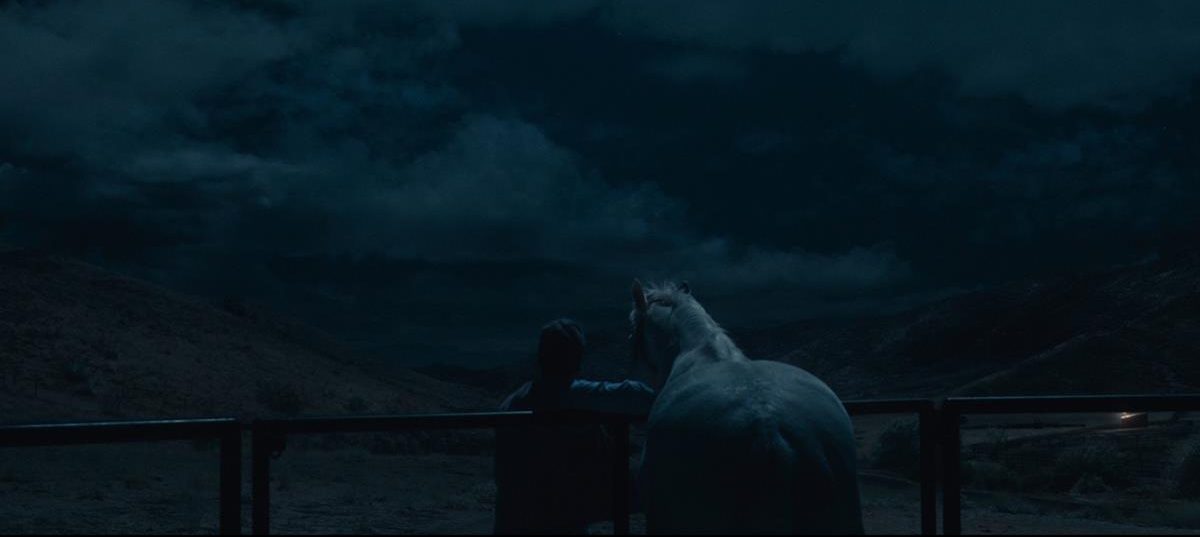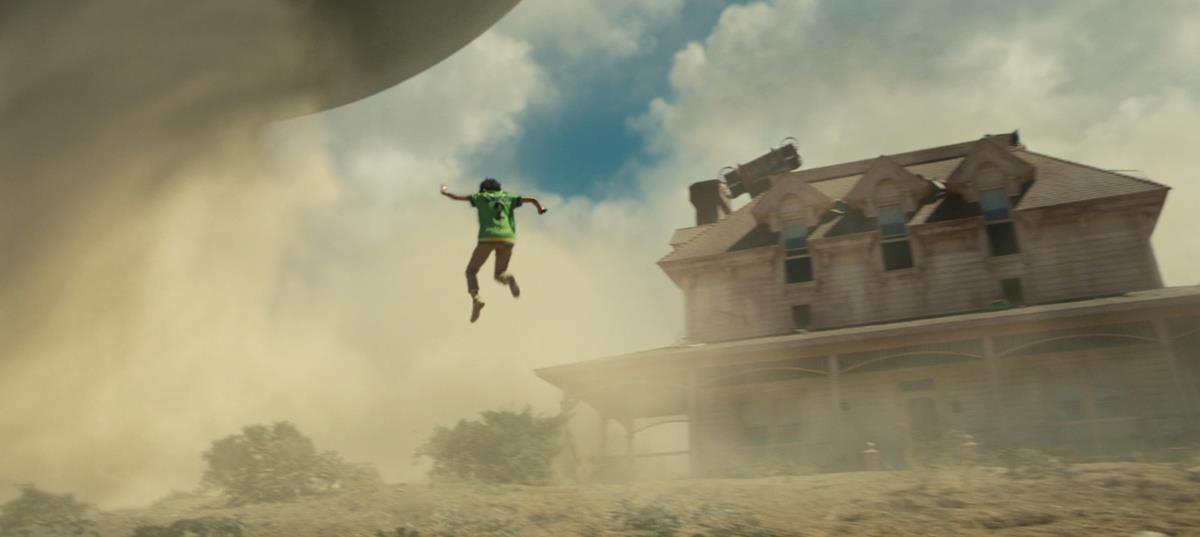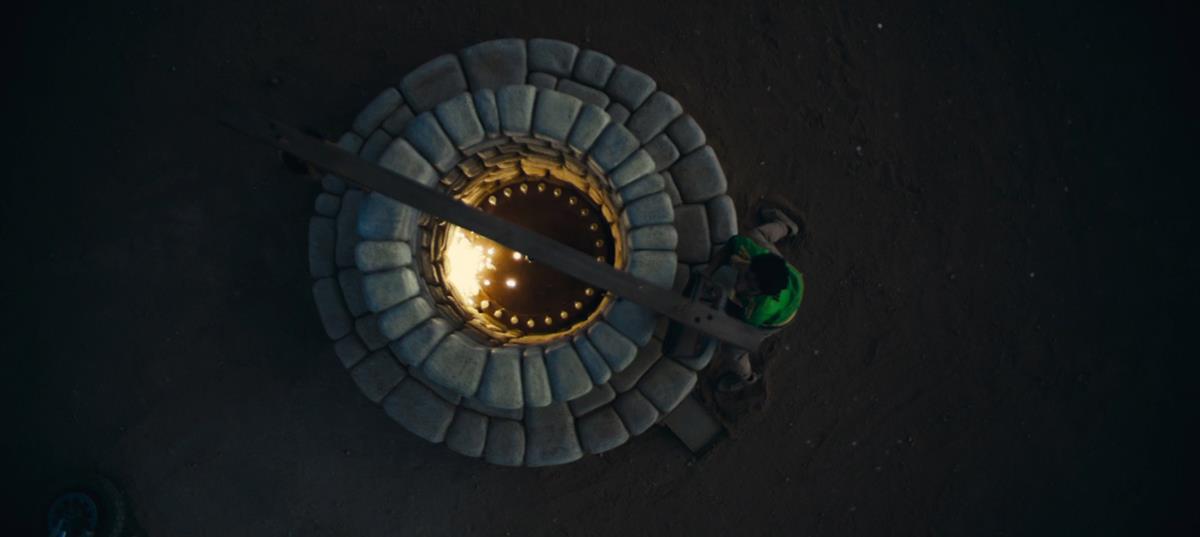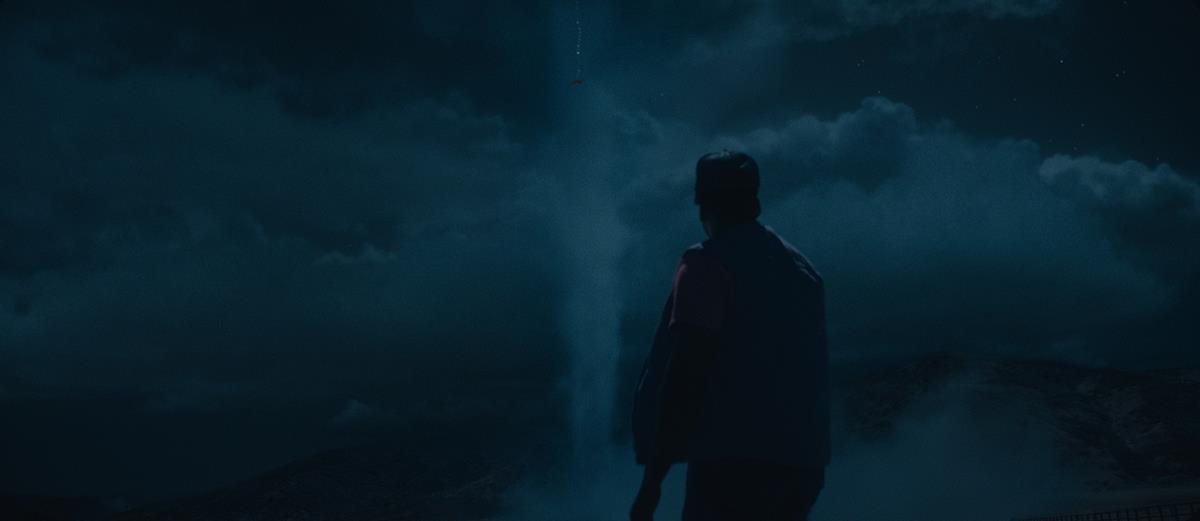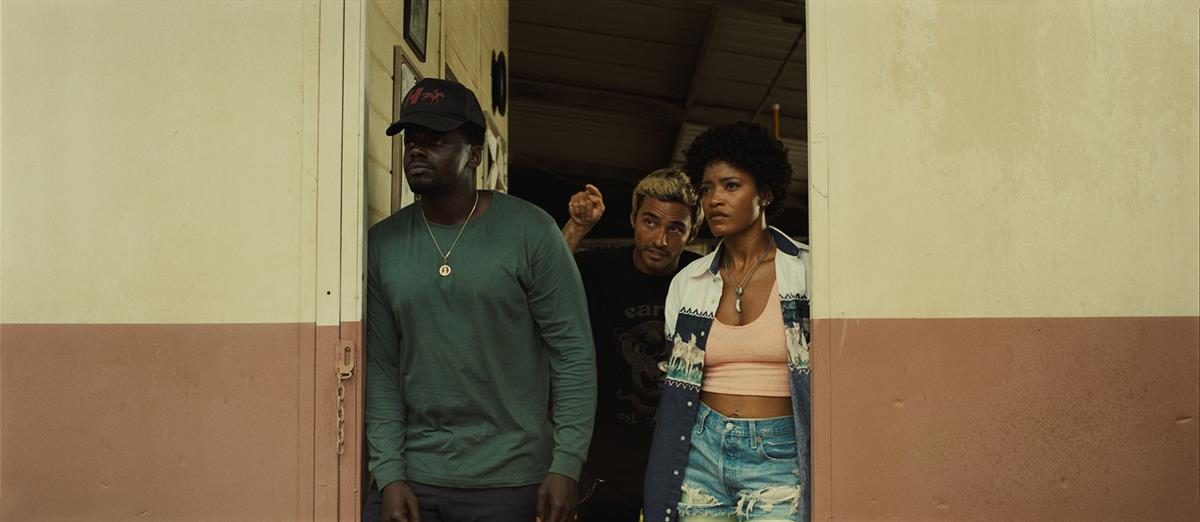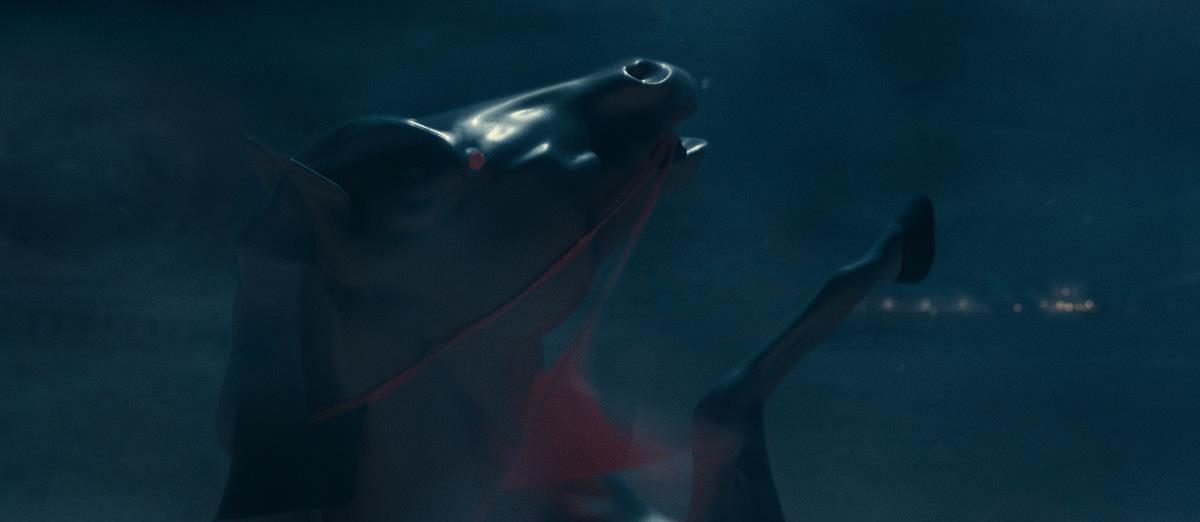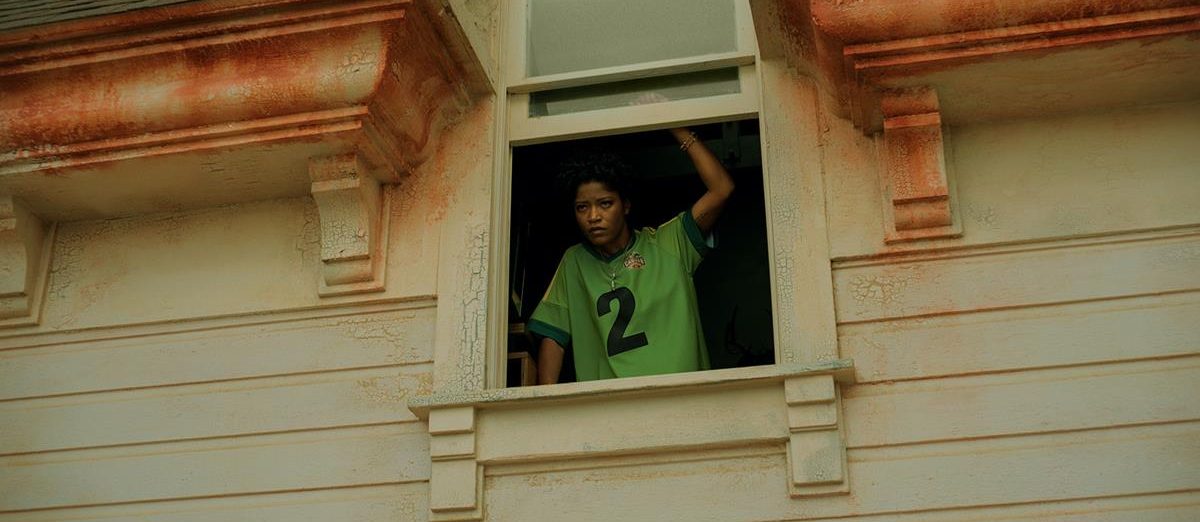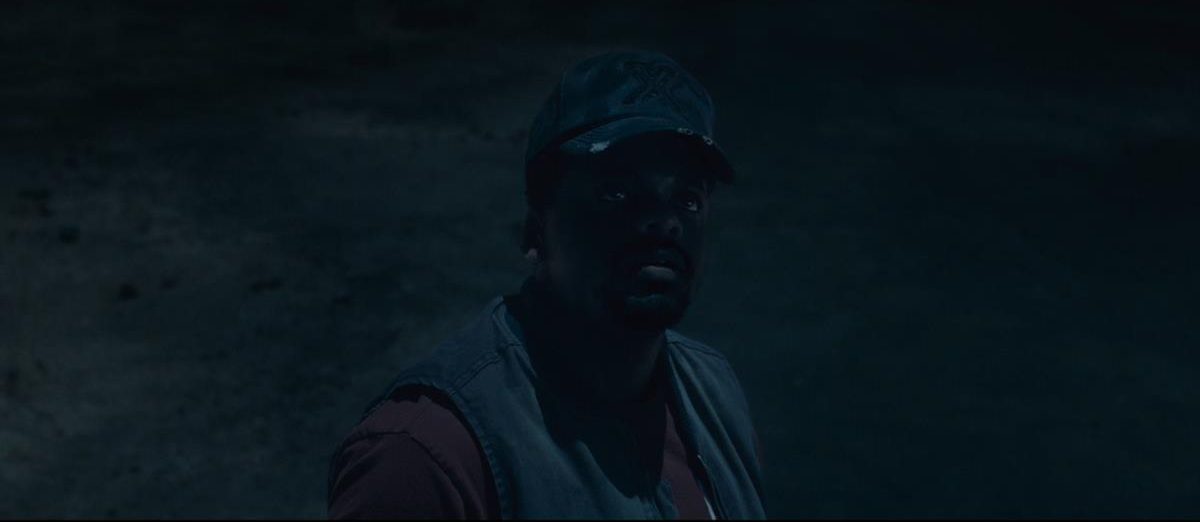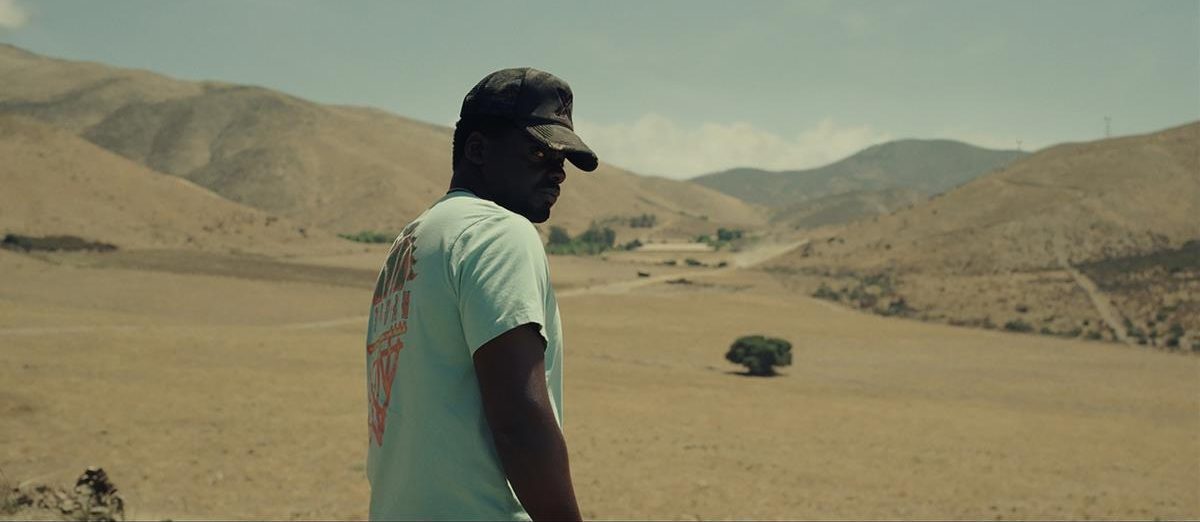For the people who are sure that they’ve seen a UFO or even been party to an alien encounter, retelling the moment is always tinged with disbelief from an increasingly smirky audience. Jordan Peele’s layered new movie Nope wanted to freeze those images in people’s minds and even used a meta premise to push home the point.
Vulture’s Roxana Hadadi compares the film to a well-known early 20th century fantasy film. “Jordan Peele’s new horror-comedy, Nope, stars Daniel Kaluuya and Keke Palmer as Otis Jr. and Emerald, the sibling proprietors of Haywood’s Hollywood Horses.
“As they attempt to capture video evidence of a mysterious being attacking their ranch from the clouds, Nope stretches out like a camera’s bellows to the wide-open landscapes and cyclone-filled sky in a way that recalls The Wizard of Oz. OJ and Em team up with a cinematographer named Antlers Holst to nab footage of the alien using a hand-cranked IMAX camera.”
READ MORE: What You Can and Can’t See in Nope (Vulture)
In a sideways tribute to the huge celluloid frame, Peele asked his Swiss cinematographer Hoyte Van Hoytema which format he would use if he wanted to document the appearance of a UFO. The answer, unsurprisingly from Chris Nolan’s usual DP, was IMAX. Such is the quality of permanence in the large format that its truth for Peele was incontrovertible and cinematically seductive.
In Van Hoytema’s hands, the portability of heavy IMAX film cameras was something that had been proven with his work with Nolan. Peele knew that Van Hoytema’s experience would elevate his new film to spectacular heights.
The cinematographer told Variety’s Jazz Tangcay about what Peele initially wanted from him. “He wanted something that felt remotely like a spectacle. He wanted to show that he had grown from the slightly lesser-scope films. With this, he wanted to explore space and vastness.”
Nope was shot on a huge ranch in Santa Clarita, California with big skies and bigger landscapes. Peele needed IMAX to be the equal of the landscape especially at night. “We spent time talking about the night because that always looks a certain way on film, and there are seven night scenes in the movie. We were out in the middle of nowhere, in nature. So, we looked at what the eye sees and what it doesn’t. We looked at how it feels to stand in the middle of the valley and be surrounded by gigantic mountain ranges and to have that space.”
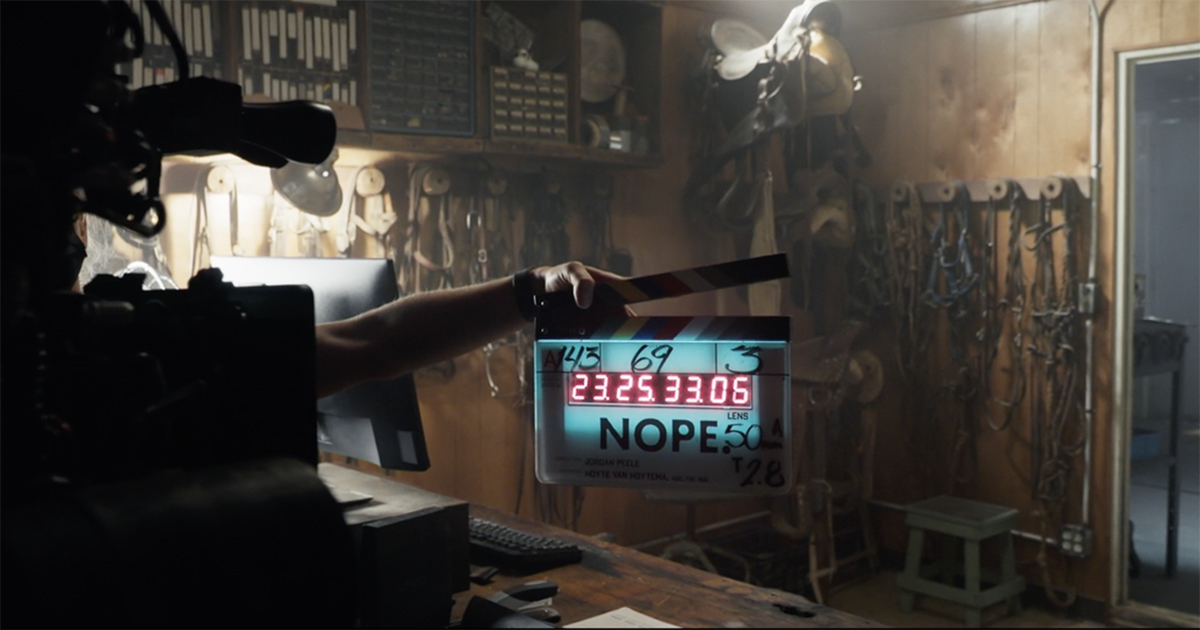
Van Hoytema was to build a camera rig that combined an infrared 65mm camera and a film camera through a prism. It was new technology that went through a lot of evolutions, but in the end, they figured out technically how to do it. “We then mixed those images to create something that felt so similar to that feeling of seeing through the darkness.”
READ MORE: ‘Nope’ DP Hoyte Van Hoytema on His Biggest Challenge Shooting Jordan Peele’s Alien Movie (Variety)
For editor Nicolas Monsour, the results gave him an extra hurdle to jump. Despite the dailies not always complying with the IMAX cameras used during production, the rig gave the film’s editors and colorists an unprecedented opportunity.
Monsour elaborated on this with Erin Brady at Slash Film, “The film looked a little bit more like infrared when we were working with it, so that we could see what was there. And then eventually it was all dialed into this really uncanny blend of seeing out into the night. And there was a little bit more temp color correction as we went to make sure, you know, when you’re trying to judge an edit, that it’s flowing, that there isn’t a bump when you’re watching that because of some technical difference because of the film.”
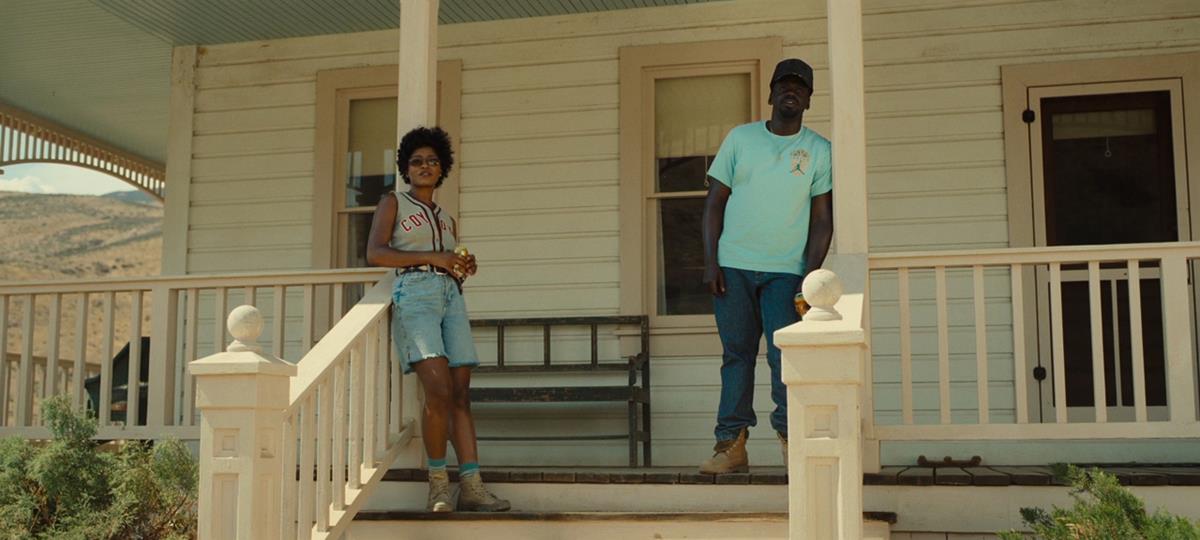
IMAX ended up being used for around 40% of the movie, especially the night scenes as “they were the ones that drew you in.” Van Hoytema explains how “suddenly you start seeing details in the hills around you, the stars in the sky — you experience the expanse of nature. We loved that feeling, which also becomes a very scary feeling in the context of the film.”
“Nope” Editor Nicholas Monsour Explains How Jordan Peele’s New Film Straddles Comedy and Horror
By Abby Spessard
“Nope raises more questions than answers and walks a fine line between ambiguity and vagueness,” writes Slash Film’s Jack Giroux. And he may be right. Without revealing any of writer and director Jordan Peele’s secrets, editor Nicholas Monsour recounts how he assembled the film.
One of Giroux’s biggest questions surrounds Peele’s choice to eschew traditional, verbal exposition. How did the team decide what does and doesn’t need to be said? “Jordan gives his audience a ton of credit, and I think rightfully so,” Monsour says.
“One of the reasons that I think that the actors and the performances can be so grounded and real and organic is that they don’t have to sit there explaining a bunch, because it’s been worked in visually in a lot of ways,” he continues. Peele selected specific details like “the doorknobs on the ranch and the costume design and the logos on their shirts, it’s all giving you this cultural, social information, and setting all these themes in motion before a word’s even uttered,” he explains.
“What Jordan does by choosing the screen time that he does, rather than filling it with exposition, he lets you figure it out in certain parts. It gives an audience a clue that there’s much more going on than just the plot.”
Monsour asserts that there’s both a genius and a madness on Peele’s set, especially when it came to determining what would be filmed and what ended up on the floor of the edit bay. They left out “some beautiful and really revealing, interesting stuff about Emerald’s character, her daily hustle,” he said. But filming those scenes was still really important because it added “all this layer for Keke to explore.”
The shots, for example, inside the UFO — or “entity,” as the film’s crew describes it — were completely unplanned. “Jordan discovered and investigated with his VFX team after photography,” Monsour reveals. “So that’s an interesting thing that got added into that section is when we get a glimpse of what’s going on that we’re hearing down below, and we get these dark glimpses of what’s happening up there. That’s a great thing Jordan thought of that just added to that section feeling completely out of control.”
Without sharing too many details, Monsour says he never gets tired of talking about this film. “For a year, we kept pinching ourselves while working on it because we all know we don’t get to work on films this unique and exciting.”
In a separate interview with Backstage’s Jessica Derschowitz, Monsour discusses the similarities between horror and comedy. Spanning Key & Peele all the way to Us,“the main difference is focus and the experience of time.”
On the comedy show the editorial team cut a sketch a day, often completing a rough cut by afternoon. “It was a great way to learn, because the filmmaking on that show was so great… it felt like getting to go in and work on the best scene of a different movie every day. It was a fun, stylistic kind of playground.”
Monsour was comfortable making the transition from comedy to horror, he relates. “My professional work in TV and film was comedy, but for 10 years before that, in art school and other video work, I’d been working on serious documentaries and weird, scary, unusual things.” Mining this wide range of interests, he draws a line that connects the polar opposites: “[They’re] two genres where you’re really trying to elicit an involuntary physical response from the audience.”
So where does Nope fall in the line between horror and comedy? “It reminds you of a bunch of different things, but it would be a very wildly disparate list of things,” Monsour notes. “He’s developing a new kind of genre, and that’s really terrifying, because you don’t exactly know what the rules are going in.”
READ MORE: ‘Nope’ Editor Shares What Makes His Collaborations with Jordan Peele Work (Backstage)
Peele shot using Kodak film and chose the 1.43:1 aspect ratio, specially created for IMAX, that enabled the vast landscape, UFO imagery and horse-riding scenes to show 40% more picture.
READ MORE: The Innovative Technique Behind Nope’s ‘Extraordinary’ Night Photography (Slash Film)
Van Hoytema and Peele entered pre-production with the usual discussion of references. He told The Credits’ Hugh Hart from Motion Pictures Association that movies like Lawrence of Arabia were an obvious one and perhaps even more obvious was Spielberg’s Close Encounters and even Jaws (the expanse of the ocean substituted for the vast ranch in Nope).
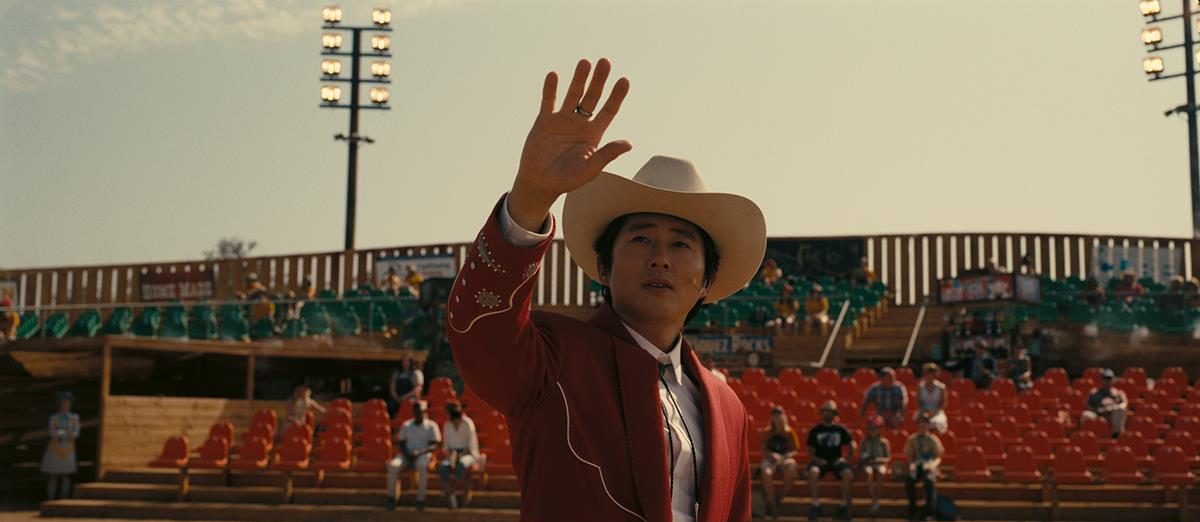
“We even watched Heaven’s Gate because of the horses and the dust! We’d just throw references at each other and explored how you may unconsciously harvest certain things from movies you love,” says the DP. “Funnily enough for us, it always came back to spectacle.”
READ MORE: “Nope” Cinematographer Hoyte van Hoytema on Capturing the Epic Scope of Jordan Peele’s Latest (The Credits)
As cinematographers now know, the use of large format allows you distance but can ironically be more intimate, so how did Van Hoytema keep the intimacy twinned with the immersion of such a large canvas? Tuned Panavision lenses were the answer. “I worked with Panavision’s Dan Sasaki. He designed custom lenses both for the Panavision and for the IMAX that tweaked the focus so the camera can get physically closer to the faces of our actors. Ultimately, I think faces are the most interesting things in film. I’m not so much interested in the expanse of nature if I don’t have the beautiful face to counteract it.”
Peele and Hoytema tested their footage frequently, according to IMAX post-production head Bruce Markoe. “They did many reviews at our IMAX City Walk theater at Universal Studios during post-production, and they did reviews at our IMAX HQ,” he says. “It really enabled them to refine how the movie was going to look and play and they optimized it for the format.”
Markoe also remarked how Peele understood how to use the format creatively. “He did a shot in the movie where the camera pushes through behind the character, as he’s looking out a window. It starts small and as the camera pushes in, it goes through the window to the distance and it opens up. He really thought about how to shoot those sequences and how to take advantage of the larger aspect ratio.”

As to how good Nope is, we’ll leave that to Collider’s Chase Hutchinson: “While both Get Out and Us are strong films in their own way, to me this is what makes Nope such an invigorating work. It shows that Peele is still pushing himself and his craft into new places, building more complex sequences that still maintain his knack for throwing visual knockout punches. To see an artist explore like this is something to cherish. From the opening moments all the way to its appropriately satisfying final shot, Peele has reached his visual mountaintop once more and there is only hope he can ascend even further from here.”
READ MORE: From ‘Get Out’ to ‘Nope,’ Jordan Peele’s Distinct Iconography Is a Visual Feast All His Own (Collider)
Want more? Check out Peele’s interview about Nope with TODAY’s Craig Melvin and how the film couldn’t have been made even five years ago. He also shares a tour of the Universal Studios Hollywood backlot and a replica of the movie’s set:
Or listen to Peele describe his love of David Fincher’s Netflix series Mindhunters, and how watching his 1995 film Se7en was a formative experience, as well as why he wanted to work with cinematographer Hoyt Van Hoytema and editor Nick Monsour:


